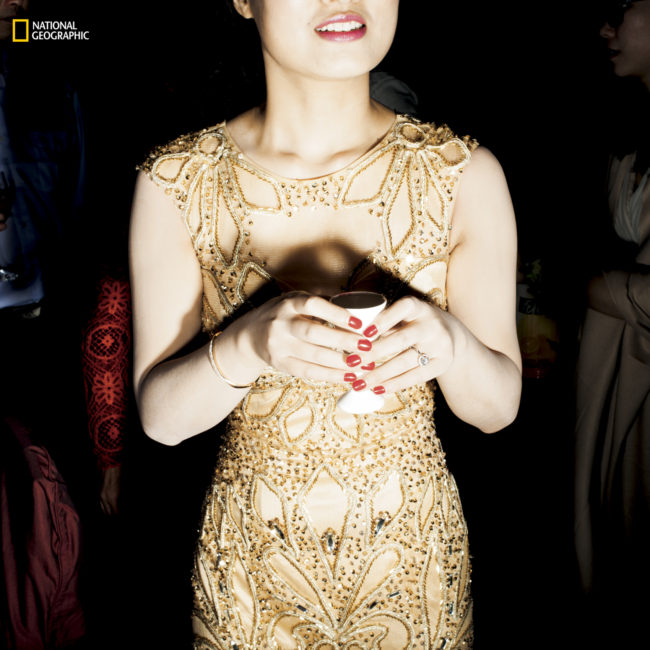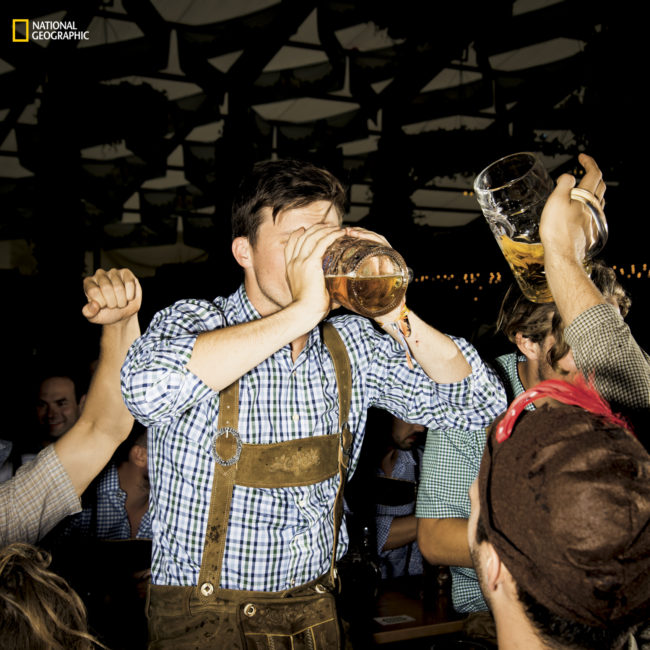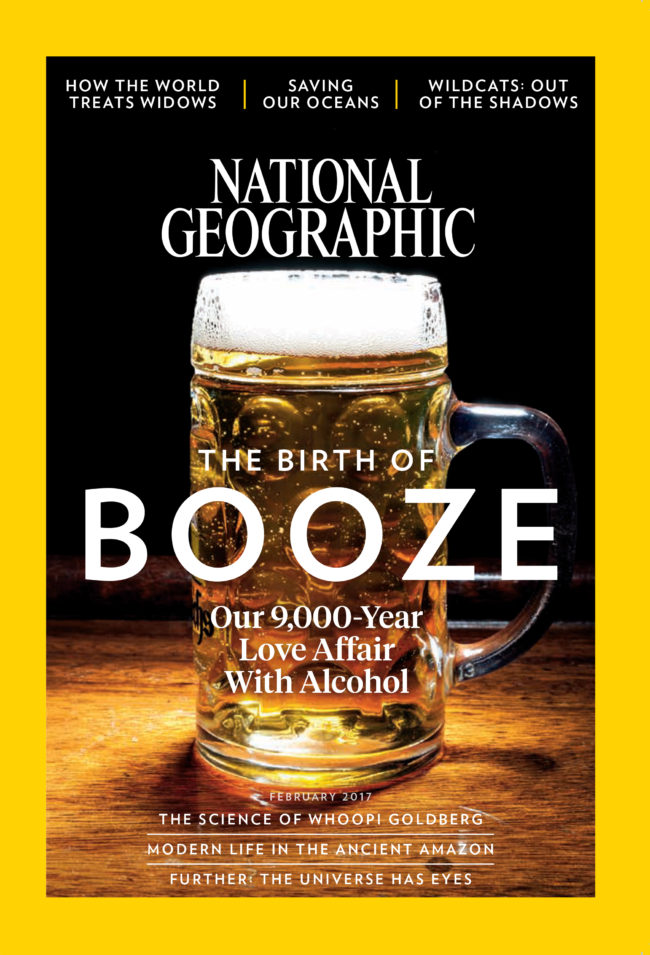February issue of National Geographic magazine cover story available here, Our 9,000-Year Love Affair with Booze.
© Brian Finke / National Geographic

A Chinese newlywed toasts her guests with a traditional cup of rice wine. The drink has been consumed in China for at least 9,000 years; a chemical residue found in a jar of that age is the oldest proof of a deliberately fermented beverage. But the influence of alcohol probably extends even deeper into prehistory.

Grapes are snacked on by a Roman soldier (left), and pressed with a massive oak-tree trunk. The juice is then fermented in open clay jars. The Romans flavored it with surprising ingredients: One of Durand’s wines contains fenugreek, iris, and seawater.

Since it began in 1810 as a wedding celebration for the Bavarian crown prince, Munich’s Oktoberfest has grown into one of the world’s largest festivals, with more than six million visitors crowding its tents each year to drain one-liter mugs of beer. Bavaria has had a big impact on beermaking: Its Reinheitsgebot, or Beer Purity Law, passed in 1516, ushered in a global trend toward uniformity by restricting brewers to water, hops, and malt (and later yeast, after it was discovered). These days some craft brewers are pushing back, experimenting with ancient additives and unusual yeasts.
National Geographic
Senior Photo Editor: Todd James
Photographer: Brian Finke
Brian: I got a call from Todd James, Senior Photo Editor at National Geographic asking if it’d be into shooting alcohol around the world. I said, “Hell Yea!” Todd and I had worked on three previous features for the magazine, I was psyched for our fourth story together. My first story with Todd was photographing “Meat in Texas”, a story about America’s obsession with meat. That job came about from my Instagram when I was posting tons of my backyard BBQ photos, the editors were familiar with my work but seeing also my obsession with meat landed me the story, along with my career of personal and editorial work.
How much do you use Instagram as a conscious promotional tool, or is it really self expression for you?
It’s a platform for trying new things, promoting, keeping people updated on latest work, it’s an immediate outlet for sharing everything.
What advice do you have for photographers using Instagram?
Always put out personal work because that’s where the best assignments come from.
What type of specific direction did you get from the magazine? What made this assignment different?
What makes National Geographic stories different is all the research before hand; the photo editor and photographer really build the story, then of course it’s the amount of time that’s dedicated. I shot on and off for four months for this story.
Did you travel with the writer?
No just myself and my assistant
It looks like you traveled extensively for this project, did you send in images as you traveled?
I traveled all over the place going to various birth places of booze around the world, started in Peru, then South of France, Republic of Georgia, Germany, China and a few paces around the U.S. Throughout shooting I’d send in photos, discuss the project and building the story with my editor.
Shooting for National Geographic is quite an honor (and it was a cover story) if you had any internal pressure, how did you deal with it?
I’m always a little nervous but mostly excited. It’s really amazing, it’s always something new, with so many new experiences.

1 Comment
I’d put this up there with dream assignments – great work by Brian as always!
Comments are closed for this article!